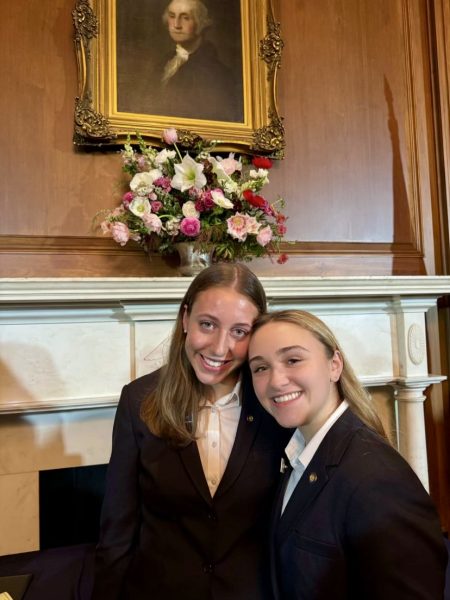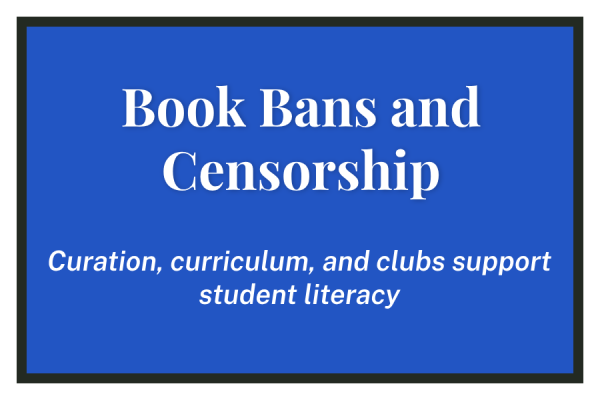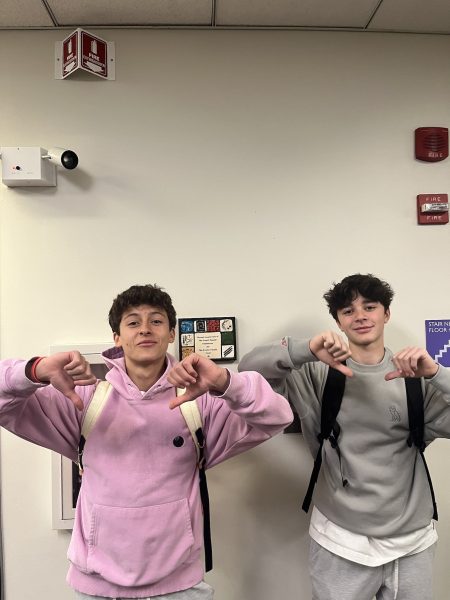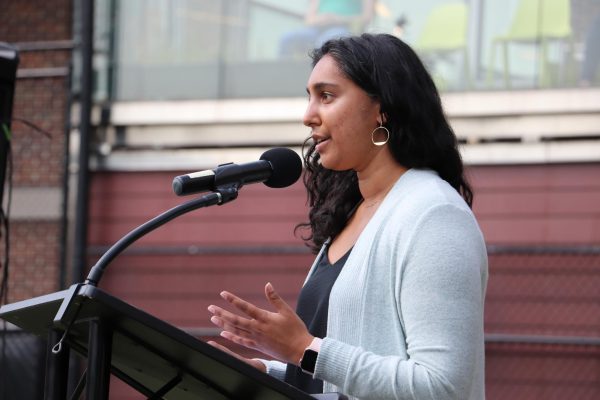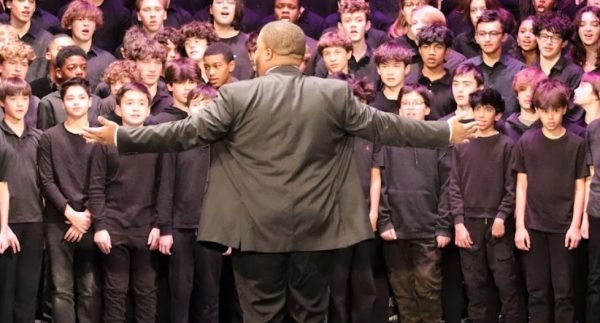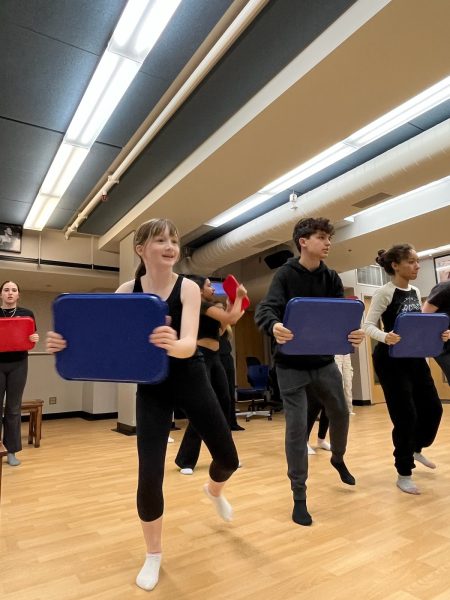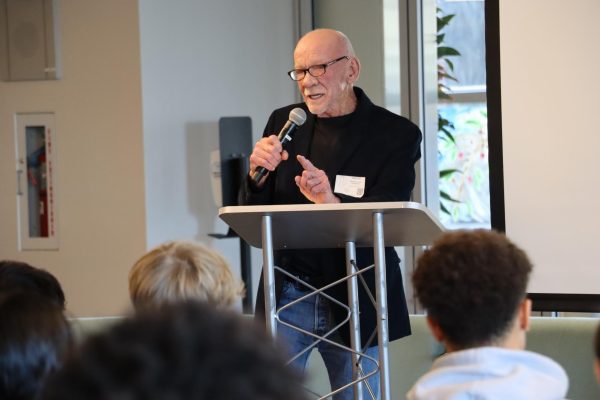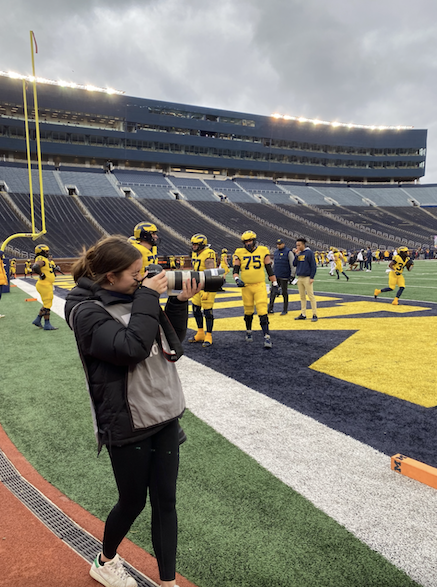Politics in the Classroom
How Did Teachers Handle Discussion of the Election?
As the President–elect of the United States Donald Trump prepares to be inaugurated into the White House, one of the most vicious, hate-filled election cycles in modern U.S. history comes to an end, a cycle in which teachers were forced to decide how to tackle the topic of the election, and to what extent it was appropriate to share their views.
At the beginning of the school year, Head of the Middle School John Novick emailed the entire Parker faculty about etiquette surrounding discussions of the election. He prefaced the missive with an explanation of how teachers, specifically at a progressive school, have the responsibility to teach listening, respect, and cultural literacy, as opposed to creating divisiveness.
Novick followed with a list of five guidelines for teachers to think about when the election comes up. He stressed that students and teachers alike will have to learn to understand other people’s perspectives and to respectfully have a conversation even if they disagree.
A section of the email was devoted to teachers’ voicing their own opinions on the candidates. “Our role as faculty and staff members, as the adults, is not to use our status, influence, or authority to guide students to any particular candidate,” Novick said, “but to inspire learning, analysis, thoughtful consideration of the issues and positions, and to do so in a way that is compatible with Parker’s philosophy and mission, requiring the students themselves to do the thinking to reach their own conclusions.”
The email served to tell Parker faculty that, although this election cycle was volatile, it was still necessary for teachers to maintain a safe space for students with all viewpoints. This left teachers with the internal struggle of whether the harmful rhetoric being voiced by the candidates outweighed any harm that talking about personal political views might have incited.
Different teachers took different approaches to how to introduce the topic of elections into their classrooms, how to respond to talk of elections, and how to make sure students were culturally literate. The Lower School decidedly worked to distance talk of the real election, instead focusing on elections and voting in general.
First graders in Bev Greenie’s class worked on an election for literary characters from novels they’d read –characters like Clifford the Dog, Snoopy, and the Berenstain Bears. They simulated the election process but explicitly avoided the actual election. Upper School students were involved in the process were specifically told not to mention the national presidential candidates, in order to avoid any confrontation or harmful viewpoints. For the younger grades, teachers thought it best not to create the opportunity for conflict.
One needs only to walk down the Upper School hallways to see the opposite approach being taken. Upper School History teacher Andrew Bigelow has political posters lining his walls (some with educational graphics and some that support Hillary Clinton; none that support Donald Trump), and even the high school physics classrooms are decorated with “I’m with her” bumper stickers.
The Wednesday after the election, a swath of white paper was put up by Upper School History teacher Jeannie Barr in the fourth floor hallway, with markers allowing students to write their feelings about the results. A sign still urges students to keep comments polite and inoffensive, but for the most part the markered comments have been negative about the topic.
Upper School Humanities teachers have found it hard to avoid the topic of the election. “My main way of teaching the election right now in my classes is to find curricular connections, and they’re everywhere,” Barr said. “That’s not always the case. Thinking back to other elections, it’s been a little harder because kids are maybe paying attention, maybe not. This election is so strange and politicized, and so hyped by the media, that I am finding I don’t have to reach too far.”
Junior David Rothman shares his experience in class. “My teachers don’t really bring up their own views that much,” Rothman said, “aside from the occasional Trump-bashing which is usually brought up by the students.”
Junior Isobel Bender said that most of the discussion she had post-election was in her Spanish class. “I thought it was a nice ratio between when I felt like I needed to say something, I could say something,” Bender said, “but when I needed a break because it was just too much, I could have that break.”
Humanities teachers approach the topic differently, some actively voicing their opinion and others maintaining more mystery around their views. “I don’t mind talking about my own opinion, but I want to make sure everyone feels comfortable and safe in the room,” Bigelow said. “I don’t mind if someone asks my view, and I don’t mind if they know my view, but I never want to make someone feel uncomfortable. I definitely recognize that it could make someone feel uncomfortable if I am grading their papers and essays, and they feel that we have a different political viewpoint.”
Bigelow brings up the point that students may feel uncomfortable voicing opposite opinions not only because a vast majority of the school did support Hillary Clinton, but also because the teachers students speak in front of have direct power over their grade in the class.
I think everyone is entitled to their own opinion, and I think no matter what, teachers should be able to speak theirs.
Barr chooses to be open. “I have always been one who believes in authenticity, and I don’t find any value in trying to hide my beliefs from my students,” Barr said. “And as such, I think my students know that I support Hillary Clinton. I have never believed that good teaching happens when the teacher is a mystery. And I know that that is a very popular view, that you shouldn’t influence the kids, but my goal is not to influence students, it’s more to encourage people to have beliefs. And if I don’t have any, why should they?”
Rothman agrees with Barr. “I think everyone is entitled to their own opinion,” Rothman said, “and I think no matter what, teachers should be able to speak theirs.”
Junior Kaden Florsheim agrees. He said teachers should “absolutely” have the right to talk about their political opinions in class.
Even so, Barr still strives to maintain a safe space for her students. “As far as Trump supporters, there are a few in my classroom, and I noticed that after the first debate, my room polarized,” she said, explaining that the class split into twelve students disputing the views of one. “He has every right to believe what he believes, and I didn’t want him coming into my classroom and feeling that he was under siege. And so after that, I really kind of shifted, and we don’t have quite as overt Clinton vs. Trump discussions anymore, because the numbers weren’t fair.”
In order to promote an “embryonic democracy,” teachers need to promote talk of the election while still allowing all viewpoints to feel welcome. “My goal is not to convert anybody, or indoctrinate anybody,” Barr said, “but to push everybody to articulate their own views, whatever they might be.”



